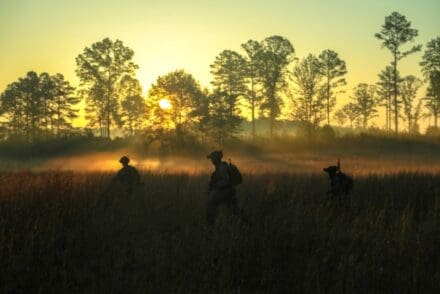
WASHINGTON — In eastern Europe, Soldiers with the 3rd Brigade Combat Team, 10th Mountain Division work alongside North Atlantic Treaty Organization allies as they transform into one of the Army’s newest formations — a light brigade combat team.
The change is part of the Army’s Transforming in Contact effort, where brigades are adapting their formations and getting new technology into the hands of Soldiers so they can experiment, innovate and be ready to fight on the modern battlefield. Soldiers can then provide real-world feedback allowing the Army to make necessary adjustments.
“Everything we do [with transforming in contact] is grounded in one simple principle and that is increased lethality for our formations,” said Maj. Gen. Joseph Ryan, Department of the Army assistant deputy chief of staff, G-3/5/7. “There is nothing that will survive contact better than more lethal, more agile, more strategically and tactically mobile formations.”
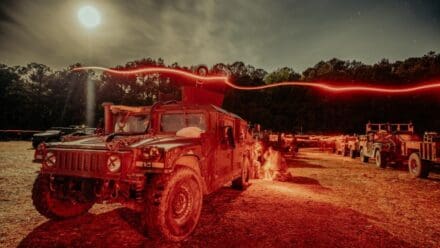
As part of the switch, the 3rd Brigade Combat Team, also known as Patriots, has focused on experimenting with organizational structure.
The brigade decentralized its sustainment support battalion to make it less vulnerable to detection and enemy fire. They also created three strike companies with ground reconnaissance scouts, short and medium-range drones, unmanned aerial weapons, mortars, counter-unmanned aerial systems and electronic warfare teams.
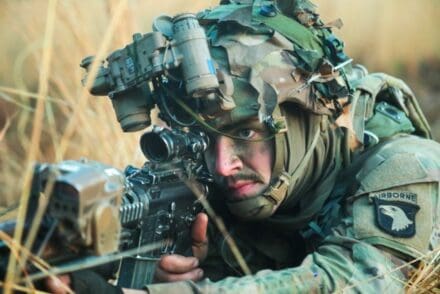
All three companies are training in Europe, and the brigade is gathering new equipment for them to test when they go on a Joint Multinational Readiness Center rotation to Bavaria in January.
That wasn’t the only change. The Patriots are using a fleet of Infantry Support Vehicles to help Soldiers navigate complex terrain. The nine-seat utility vehicle helps the brigade as they transform into a light formation.
“That’s going to provide some really enhanced mobility for us, allow us to reposition troops, and equipment on the battlefield very rapidly in ways that light infantry formations haven’t been able to do over the ground up to this point,” said Col. Joshua G. Glonek, 3rd Brigade Combat Team commander.
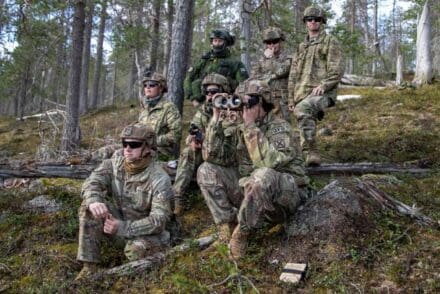
The Patriots are one of three brigades taking part in phase one of the transformation initiative that started in spring 2024. The 2nd Brigade Combat Team, 101st Airborne Division (Air Assault), also known as Screaming Eagles, is another.
The Screaming Eagles completed two rotations this year at the Joint Readiness Training Center in Fort Polk, Louisiana, as well as a 21-day field training exercise called Operation Lethal Eagle.
Throughout the year, the Screaming Eagles experimented with their structure as they became the Army’s first mobile brigade combat team, capable of increased agility to accommodate the service’s shift to large-scale operations.
That mobility comes from using approximately 200 Infantry Squad Vehicles to carry Soldiers and equipment.
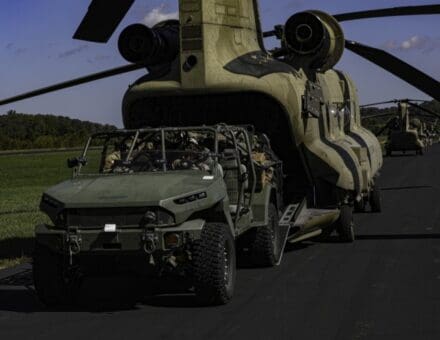
The 101st also added a multifunctional reconnaissance company for target acquisition, counter reconnaissance, and security and set up an anti-tank platoon as well as a robotics platoon for human-machine integration. These changes were incorporated into the brigade’s three infantry battalions.
Transforming in Contact not only applies to organizational structure but also experimentation with new technology.
During their rotations at the training center, the Screaming Eagles used drones and electromagnetic decoys to draw enemy fire. They also experimented with multiple networked communication technologies during their field training exercise.
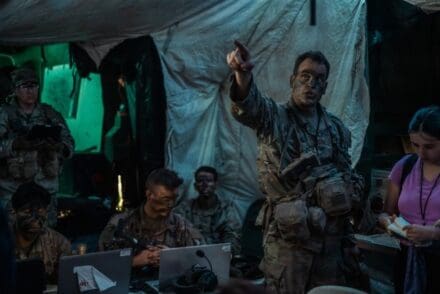
The Screaming Eagles passed what they learned onto the Patriots as they tested the improved command and control capabilities while on deployment.
Glonek said this is allowing the brigades to dynamically change the way they communicate and deal with enemy interference. It’s also allowing them to use command posts that are less detectable and more survivable.
He added the Patriots are in the process of adding unmanned aerial systems to every level of the brigade as they head into their upcoming combat training center rotation.
The 2nd Light Brigade Combat Team, 25th Infantry Division, the other brigade in phase one of the initiative, took part in the Joint Pacific Multinational Readiness Center rotation earlier this month in Hawaii.
The training tested the brigade and the Army’s ability to operate effectively across multiple domains, including land, air and cyber.
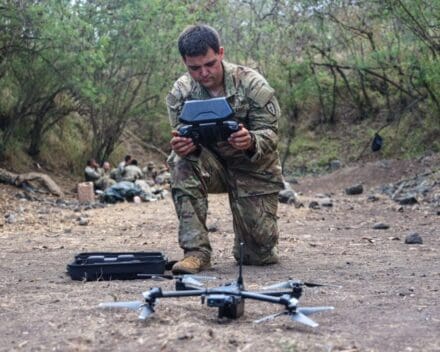
“We are using JPMRC and our warfighter exercise in December to validate our transformation in contact construct with the 2nd Light Brigade Combat Team along with those lessons learned from 101st Airborne and 10th Mountain Division,” said Maj. Gen. Marcus Evans, 25th ID commanding general. “Innovation never stops at our level. We are in a relentless pursuit of excellence and strive to get 1% better every day.”
Army Chief of Staff Gen. Randy George recently announced phase two of the transformation initiative will include two divisions, the 101st and 25th as well as two armored brigade combat teams, two Stryker brigade combat teams, and additional formations from the National Guard and Army Reserve.
This effort is set to occur in fiscal year 2025 and include every Army warfighting function.
By Christopher Hurd, Army News Service

